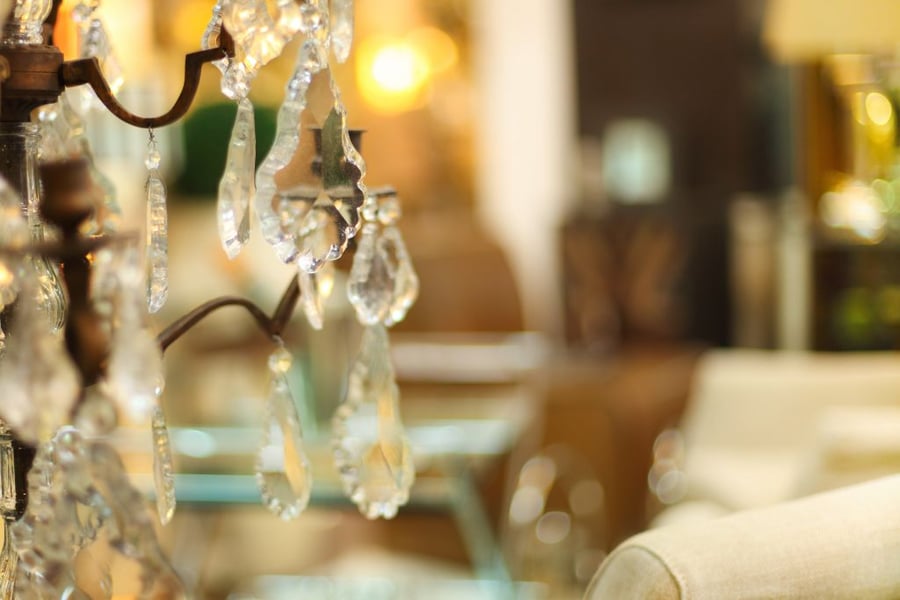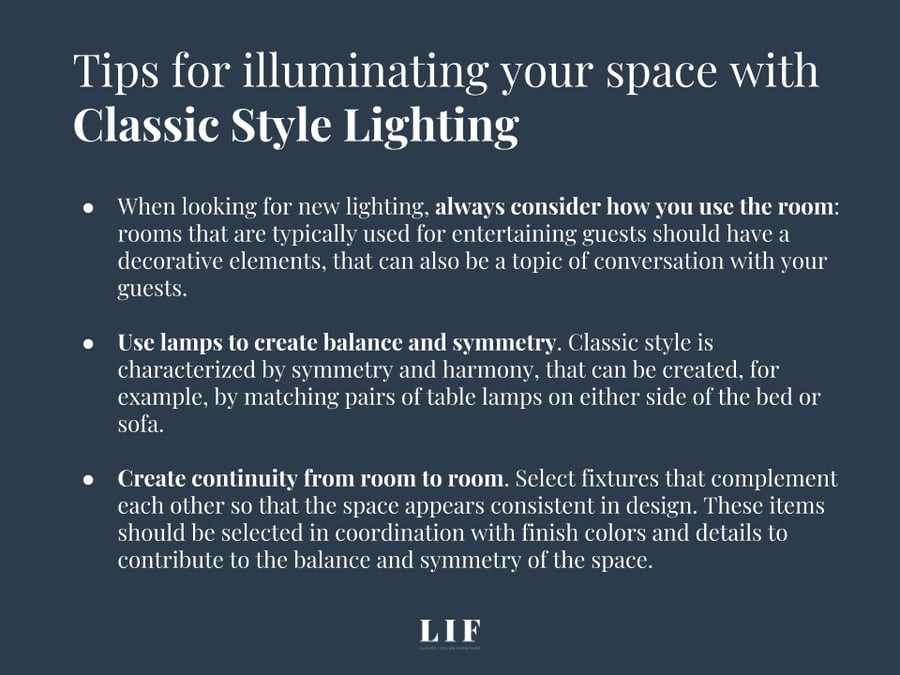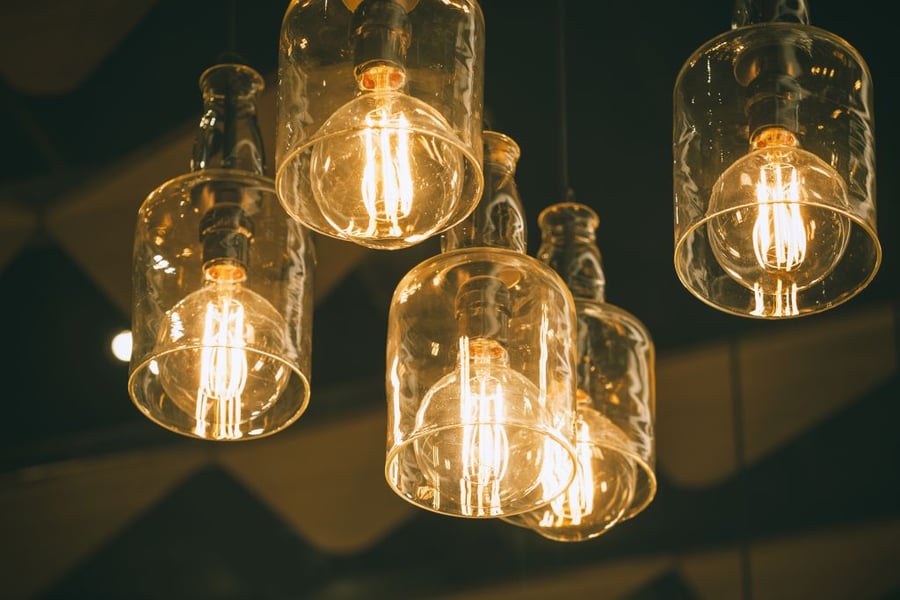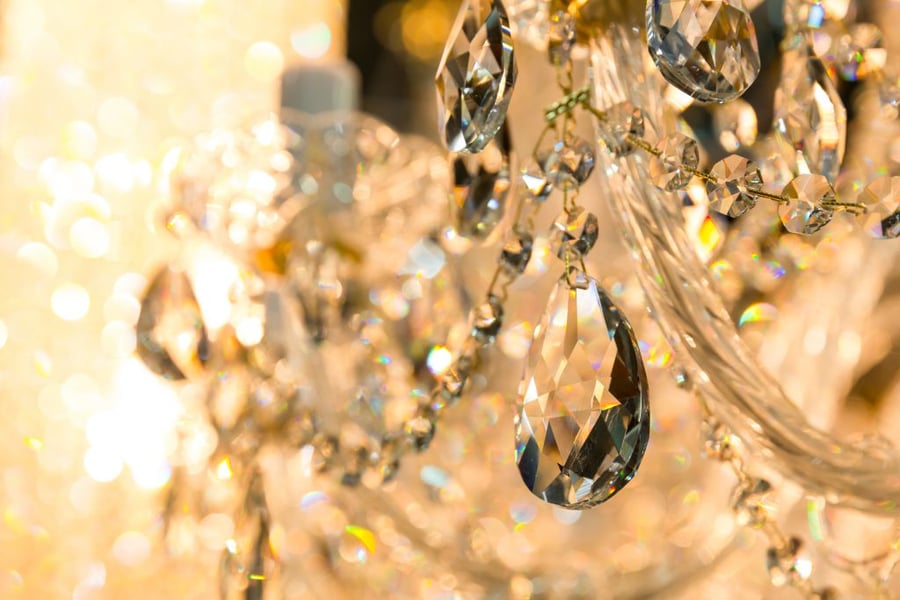In a mountain setting, let's just imagine the Dolomites, the landscape radically changes from the early hours of the day until evening.
For example at daybreak and sunset there's the alpenglow, that phenomenon that causes the Dolomites to be tinged in red (and is the basis of the legend of King Laurin). More in general the effect of change is seen on the surrounding woods, the rocky walls and the mountain towns depending on the time of day and the position of the sun.
It's a question of light.
Light defines our interior and exterior living spaces, it can enhance the furnishing, harmonise colours and trick the eye, giving the illusion of a greater space. Based on the type and its projection (direct, indirect, diffuse, etc.) it can change the atmosphere of a room and so its character (at a functional level as well).
For its ability to define it is considered very seriously by interior designers and is in fact a fundamental aspect. It controls and modulates the space and the furnishing lines, conferring a sense of harmony if used in the right manner (apart from being able to obviate limited spaces or suffocating design solutions).

Lighting design: illuminating means furnishing
When we speak of interior design, we are normally concerned with furniture and accessories, putting to one side the fact that colour and light are also “furnishing” elements. They are fundamental aspects from a creative point of view and create an overall sense of unification.
As we did for furnishing let's think about style in a strict sense and trend, the same goes for lighting. For a classic style you are invited to choose solutions for the lighting that is right for its features (something that obviously applied to the other styles), conceiving and planning it so as to create a classic lighting design.
In this sense before considering a real lighting project, it's important to start with a series of issues (questions and proposals) about that which you want to create and the space available.
This is followed by the choice of type (wall or upright, diffusion or direct, there are many options) based on the style of furnishing, classic in this case.
- With the seasons how does the effect if natural daily light change and how can this be dealt with?
- Where are the windows and the balconies in the home? Keep in mind that the best light comes from the east and north (south and west require additional “artificial attention”).
- Evaluate the advantage of adapting the windows or using curtain to filter the rays near the bathroom or near dazzling light (that occurs at certain times of the day).
- Always ask yourself where artificial light sources should be located based on the furnishing whether diffuse, direct or indirect, striving for a balance.
- Consider the light scheme combined with the arrangement of furnishing, otherwise you risk losing its enhancing potential.

Light bulbs: there is no end of choice
If you are considering a clasic lighting design this does not necessarily mean precluding more modern and seemingly less suitable lighting.
The classic incandescent bulb for example (no longer produced but still on the market) costs little with high consumption and low efficiency. The vintage look makes it perfect for spaces reflecting the past, even if it has been surpassed by halogen that are adjustable and improved in every aspect.
The best solutions are fluorescents and LED bulbs. The first are very long lasting and luminous. The second are latest generation in that they offer minimal consumption, a long-life cycle and significant light emission.
They can also be created in a glass bulb style that captures old incandescence and so combines efficiency with a classic a look. The perfect, if more costly solution, for classic lighting design.

Why choose classic lighting design for your spaces?
The above, long as it was, was necessary to understand one thing: opting for a classic lighting solution does not only mean luxurious candelabras, imposing uprights with silver decorations or ostentation in choosing incandescent bulbs because they capture the past and are classics (we have just seen that it's possible to choose LED within a classical bulb).
The real difference depends on how you exploit its capacity to reflect, delineating forms and highlighting in a subtle and focused manner that which a classic interior has to offer: luxury materials, structural and essential lines, precious and never elaborate decorations. A harmonious balance in which the light plays a major role, whether it is natural or artificial.

Diffuse illumination helps you to create an idea of elegant relaxation conferring unity around a centrepiece such as the sofa.
Direct and with greater power, it could help to enhance the more functional areas of the home, such as the kitchen work surface where you prepare treats for family and friends or have a quick snack. A beautiful and elegant upright can be the ideal companion for evening reading on the armchair or at your desk.
It is not so much the type of lighting that makes the difference, but how you use it to subtlety highlight the more elegant and refined spaces of your classic interior. In this sense more light sources help to change the atmosphere of a room based on requirements or your preferences.


